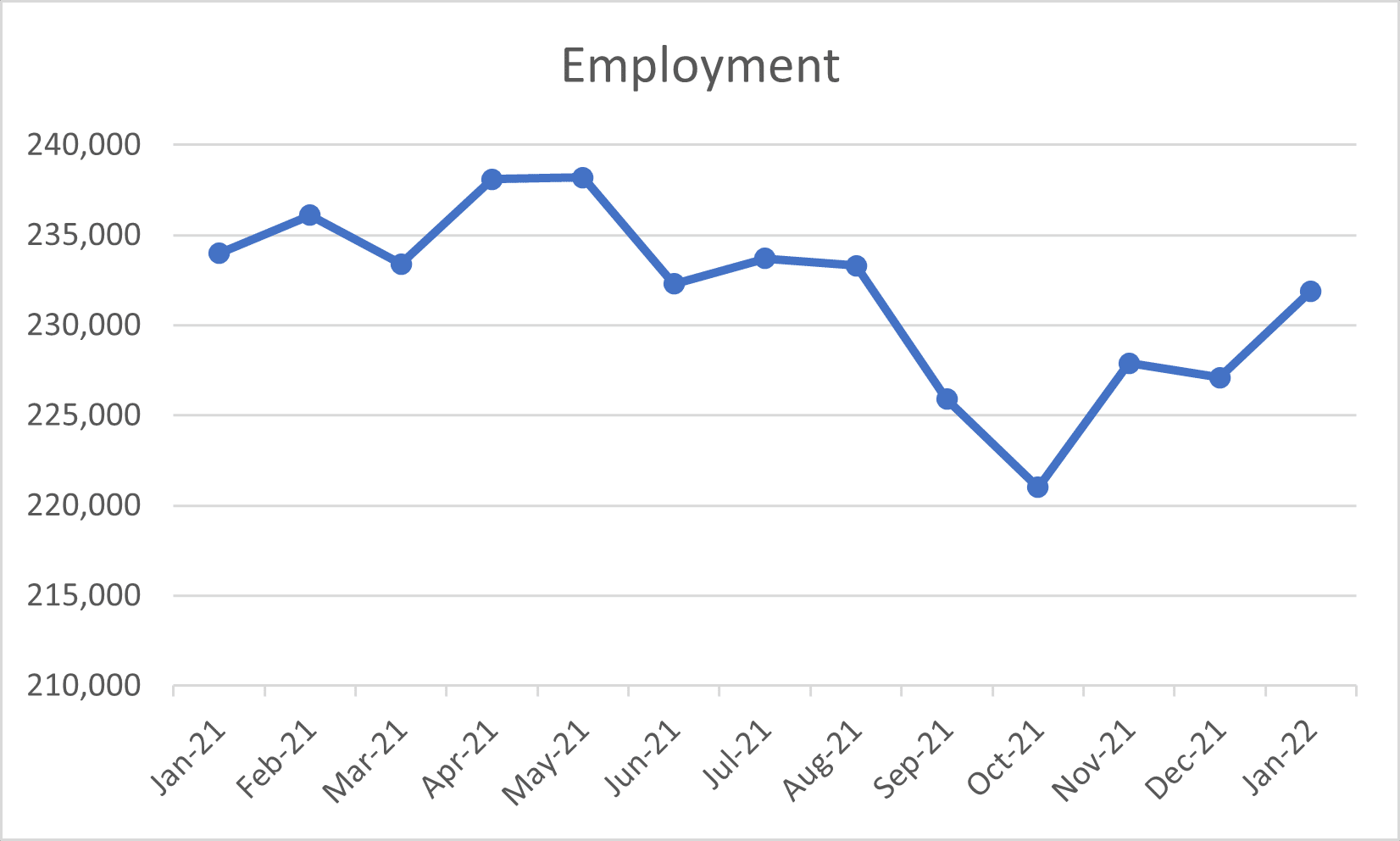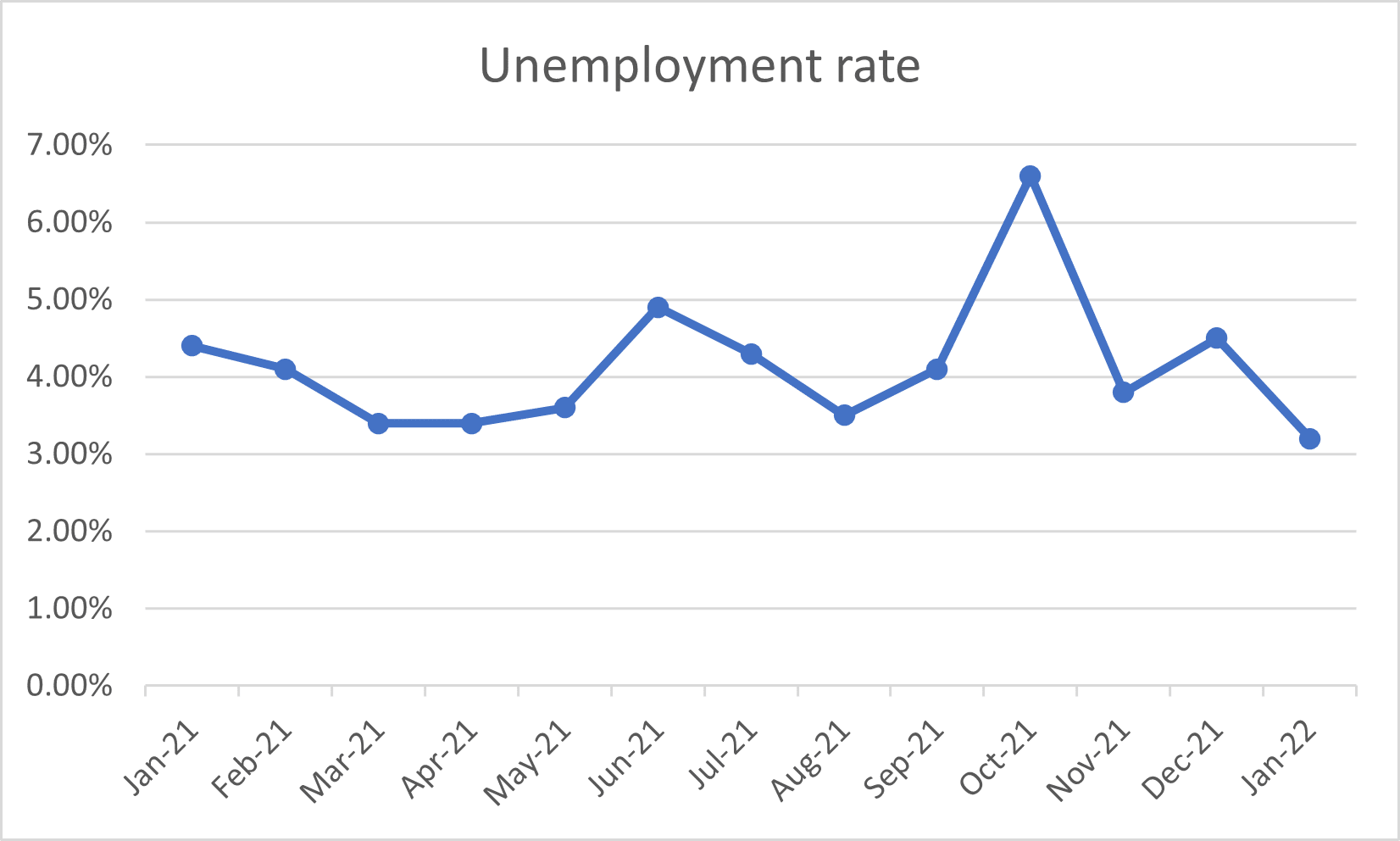ACT employment figures are climbing back to pre-lockdown levels, and the ACT once more had the lowest unemployment rate in the country, according to the ABS Labour Force Report for January.
231,900 people are employed in the ACT – nearly 5,000 more than last month, and nearly 10,000 more than three months ago.
In July, before the lockdown, 233,700 people were employed, but nearly 13,000 people lost their jobs when the ACT Government declared lockdown in August. Employment fell to 225,900 in September and then to 221,000 in October. It recovered once lockdown ended that month; in November, 227,900 people were employed. Employment dipped to 227,100 in December, during the omicron wave and summer holidays.

“Recent strong retail trade figures and strong credit card spending data, as well as an increase in the household savings rate, which will support greater private consumption, continue to give reason to be cautiously optimistic about the year ahead,” said Tara Cheyne, ACT Minister for Business and Better Regulation.
“The ACT Government is getting on with building solid economic foundations for the Territory to reach our target of 250,000 jobs by 2025 and continue the strong and sustainable economic diversification of our economy.”
The ACT has returned to its consistently low unemployment rates. In January, it had the lowest unemployment levels in Australia – 3.2 per cent, 1 point fewer than the Australian average of 4.2 per cent.

For eight months last year (January–May, July, September, November), the ACT had the lowest or equal lowest unemployment rate in the country. But it had the highest in October, at the height of the pandemic, and the second lowest last month.
Then, the Canberra Liberals blamed “excessive regulation and taxation”, but the government accused the opposition of cherry-picking; they said the ACT consistently had one of Australia’s lowest unemployment rates during the pandemic, while the economy had strongly recovered, thanks to government programs.
“The Opposition seized on the December data to create an erroneous narrative,” Ms Cheyne said now. “This month, they are strangely quiet.
“A month of ABS Labour Force data doesn’t make a trend, and the ACT generally experiences greater variability in the rate due to a smaller sample size than other jurisdictions.
“This is why the aggregate trend of a number of economic data points is assessed to provide a more fulsome picture of our economic recovery.”
Canberra Daily would love to hear from you about a story idea in the Canberra and surrounding region. Click here to submit a news tip.



